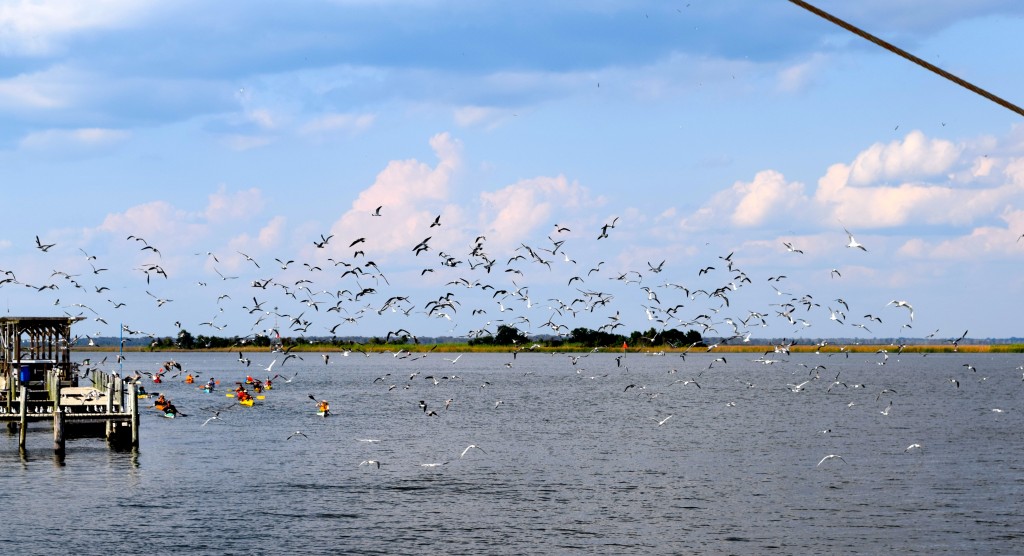A Brief Look at the Apalachicola RiverTrek Paddling Experience 
by Doug Alderson
Like the quintessential hero’s journey, participants in the Apalachicola RiverTrek have various trials and stages to complete in order to ensure success. First, it takes a desire to paddle five days and 110 miles down the entire Apalachicola River, no small task. Once committed and accepted as part of the group, usually five to six months ahead of the journey, personal preparation and fundraising for the Apalachicola Riverkeeper begins. Donations equaling a thousand dollars or more per paddler is the target. A reliable sea kayak and associated gear must be obtained or borrowed and a routine of training and conditioning begun.
By embarkation day, there is often a slight bit of trepidation along with the knowledge that essential details have been worked out through careful planning. Confidence builds among paddlers as the river miles pass, the shorelines a changing tapestry of wild beauty. With numerous sandbars and warm afternoons, frequent swim breaks help keep spirits high and muscles relaxed. The river magic enfolds the group, the constant flow a metaphor for life’s sustainability.
On the fourth day, the three-story “Sand Mountain” is climbed. This was built as a result of harmful dredging by the Army Corps of Engineers in years past. The view from the summit is spectacular and it’s fun to cascade down the slopes. Sand Mountain serves as a gateway to the tougher river sections because sandbars are less frequent as the river becomes wider, so rest stops are fewer and wind can be more of a factor. A support boat waits at the turn into Owl Creek (leading to the Hickory Landing Campground) since this can be difficult to determine without a GPS. The previous three campsites have been at sandbars on the main river.
On the fifth and final day, the group stops at Fort Gadsden Historic Site to learn how Native Americans, free blacks and escaped slaves once populated the shorelines of this section of river and occupied a former British Fort before being blown up by the American Navy in 1815. The river widens even more here, rest stops are few and tides and winds have a stronger influence. The most difficult physical test of the journey is often the last 10 miles, making the cheers of family, friends and supporters at trail’s end feel well deserved. Participants have become more seasoned as paddlers. They have forged close friendships. And, hopefully, they will carry on as ambassadors for the Apalachicola River and Bay. Some vow to join again next year while others take satisfaction in completing at least one Apalachicola RiverTrek.
Note: If you are interested in participating in RiverTrek, contact Doug Alderson ([email protected]) and Georgia Ackerman ([email protected]). Applications will be available in early 2016.
RiverTrek is coordinated by Apalachicola Riverkeeper volunteers Georgia Ackerman, Doug Alderson and Rick Zelznak.



